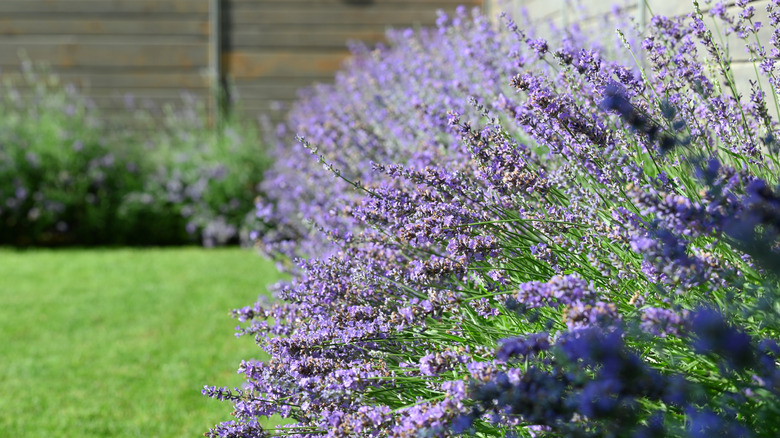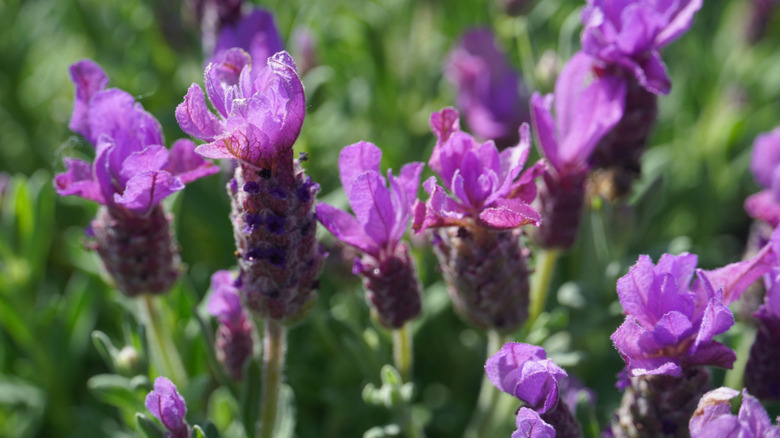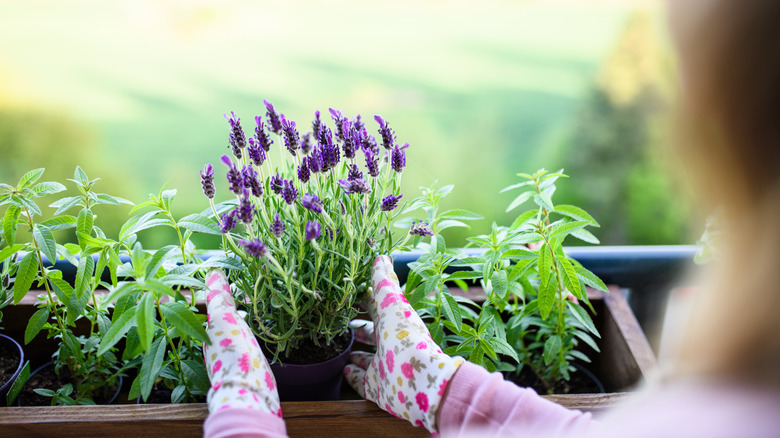How To Choose The Best Lavender Plant Variety Option For Your Home's Climate
When you think of lavender, you might be thinking of the scent of your favorite candle or soap. If you're a gardener, maybe you've been dreaming of incorporating lavender into your landscape for a pop of purple. Are you only picturing one type of lavender? As it turns out, there are 47 species within the Lavandula genus, each with their own unique growing needs.
Generally, lavender grows best in USDA Hardiness Zones 4 through 10, though this range doesn't apply to every species, and it doesn't mean every type will thrive in every climate equally. The good news is that you don't have to sift through dozens of lavender species to find the right one for your garden. Instead, you'll almost certainly be able to find something that works for your home's climate out of the three main types of lavender: English lavender (Lavandula angustifolia), Spanish lavender (Lavandula stoechas), and hybrid lavender (Lavandula x intermedia).
The three main types of lavender to consider
The first type of lavender, English lavender, is also the most common type, so it's no surprise that another name for this particular species is "common lavender." It's a pretty resilient perennial shrub with a solid drought tolerance and little need for fertilization, which makes it an excellent outdoor plant for dry climates. However, the flip side of that tolerance is that the biggest threat to your English lavender is too much moisture— you'll need to worry about over-watering, humidity, and poorly draining soil more than droughts or cold temperatures.
Spanish lavender, sometimes also called French lavender, is similarly resistant to drought. It's more heat tolerant than English lavender, but inversely, less cold resistant and more fragile than its English counterpart. While it's more susceptible to cold, it's less susceptible to deer — they tend to leave this lavender species alone thanks to its strong fragrance.
The last of the three main lavender types, hybrid lavenders, are also known as lavandins. Lavandula x intermedia is specifically a hybrid between English lavender and Portuguese lavender, though it's slightly higher maintenance and less hardy than English lavender. It also tolerates heat better than English lavender, as long as that heat is dry. Different hybrids are suited to different climates, with cultivars like 'Provence' better withstanding humidity.
Which type of lavender is right for your garden's climate?
Lavender comes from the Mediterranean, so it generally prefers climates that mimic that: hot, dry summers and mild winters. No matter the species, it's not finicky about what soil it's planted in, as long as that soil isn't heavy clay with little drainage. The most surefire way to know which lavender is best for your climate is to look at your hardiness zone. The U.S. Department of Agriculture breaks the country into these zones based on an area's average annual minimum winter temperature, with lower zone numbers equating to colder winters. If a plant is hardy to a larger range of zones, it can withstand a larger range of temperatures.
English lavender is hardy in Zones 5 through 9, meaning it can survive temperatures as low as 20ºF, though you may need to winterize your lavender to protect against harsh weather. This is your best bet for colder climates and the overall most versatile choice of species. Because it's a crossbreed with English lavender, hybrid lavender can also be adaptable to colder weather, though it only thrives in Zones 5 through 8 — it generally prefers hot, dry climates, but has room for temperature flexibility. If you're living in an area that's hot and humid, consider Spanish lavender since it's more tolerant of humidity than other types, but should still be monitored for over-watering. It's excellent for warmer climates, but only hardy in Zones 8 and 9.


